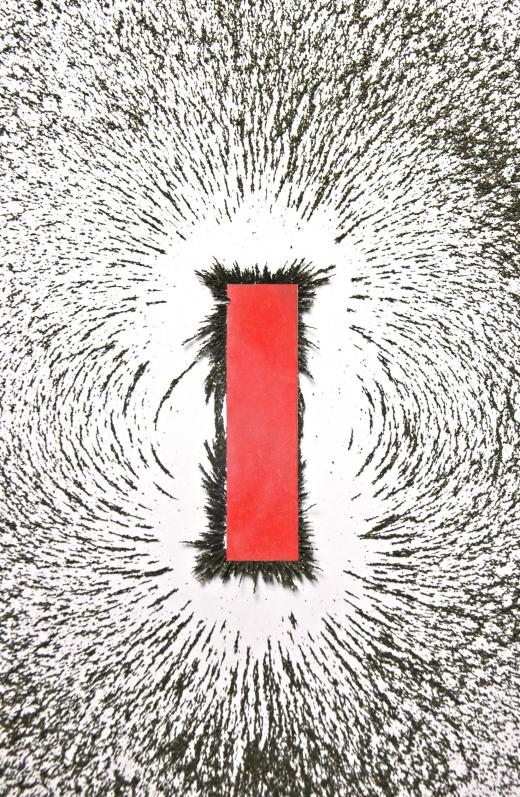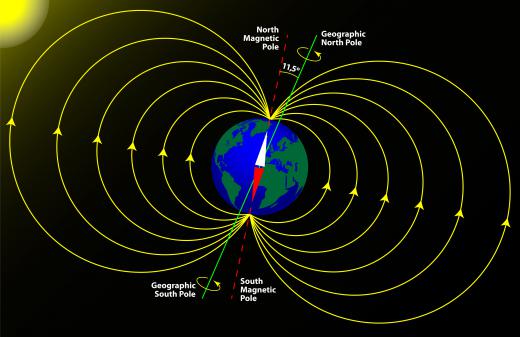What Is a Magnetic Field Force?
Magnetic field force is the effect that a magnetic field exerts or acts on a charged particle, such as a molecule, when passing through that field. These forces exist any time there is an electrically charged molecule near a magnet, or when electricity passes through a wire or coil. Magnetic field force can be used to power electric motors, and to analyze chemical structures of materials because of the way particles respond to it.
When electric current is passed through a wire, the flow of electrons creates a magnetic field, creating a force that can act on other materials. A common example of magnetic field force is an electric motor, which uses a moving rotor with wires coiled around it, surrounded by a stator with additional coils. When an electric current is applied to the stator coils, they create a magnetic field, and the force of that field creates torque that moves the rotor.

The direction of the magnetic field force can be described by using what is called the right hand rule. A person can point their thumb, index or first finger, and the second finger in three different directions, often called the x-, y-, and z-axis. Each finger and the thumb should be at 90 degrees to each other, so if the person points the index finger up, the second finger points to the left and the thumb points directly at the person.

Using this arrangement of the fingers, each finger will show the directions of the electrical flow (the index finger), the magnetic field (the second finger) and the resulting magnetic field force (the thumb). When the four fingers of the hand are curled toward the palm, this shows the direction of the magnetic field with the thumb still indicating the direction of the force. Using the right hand rule is an easy way for students learning about magnetic fields to see the effects of current and forces that result.
Magnetic fields can be very useful in the laboratory for analysis of materials. If a material needs to be identified, or broken down into its molecular components, the sample can be ionized, which changes the material into a gas with positive or negative electrical charges. This ionized gas is then passed through a strong magnetic field, and exits out into a collection area.
The mass or weight of each ionized particle of the test sample responds differently to the magnetic field force, and the particles are bent slightly from a straight direction. A collection device registers where each particle strikes the detector, and computer software can identify the molecule from how it interacts with the field. One type of device using this technology is called a mass spectrometer, and is widely used for helping to identify unknown substances.
Another use of magnetic fields to cause changes in ionized materials is a particle accelerator. In the late 20th century, the largest particle accelerator built at that time was located at the border of Switzerland and France, with 17 miles (27 kilometers) of accelerator deep underground in a large loop. The equipment took advantage of magnetic field force to rapidly accelerate charged particles into the loop, where additional fields continued to speed up, or accelerate the charged particles.
As the high-speed particles circled the large collector, they were managed by other magnetic field controls and sent to collisions with other materials. This equipment was build to test high-energy collisions similar to those seen in the sun or other stars, and during nuclear reactions. The location underground was used to prevent particles from space interfering with the test results, because the layers of rock above the accelerator absorbed high-speed energy and ions.
AS FEATURED ON:
AS FEATURED ON:












Discuss this Article
Post your comments